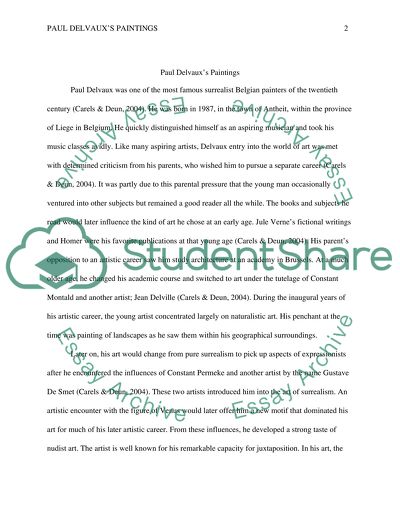Cite this document
(“Paul Delvauxs Paintings Essay Example | Topics and Well Written Essays - 2250 words”, n.d.)
Retrieved from https://studentshare.org/visual-arts-film-studies/1459515-paul-delvauxs-paintings
Retrieved from https://studentshare.org/visual-arts-film-studies/1459515-paul-delvauxs-paintings
(Paul Delvauxs Paintings Essay Example | Topics and Well Written Essays - 2250 Words)
https://studentshare.org/visual-arts-film-studies/1459515-paul-delvauxs-paintings.
https://studentshare.org/visual-arts-film-studies/1459515-paul-delvauxs-paintings.
“Paul Delvauxs Paintings Essay Example | Topics and Well Written Essays - 2250 Words”, n.d. https://studentshare.org/visual-arts-film-studies/1459515-paul-delvauxs-paintings.


